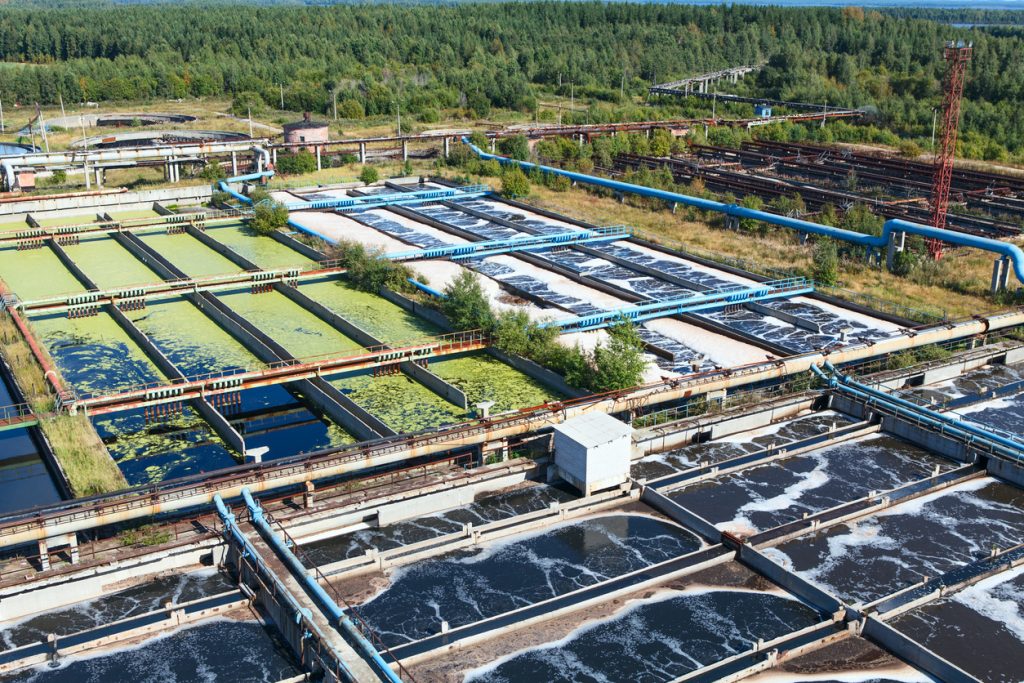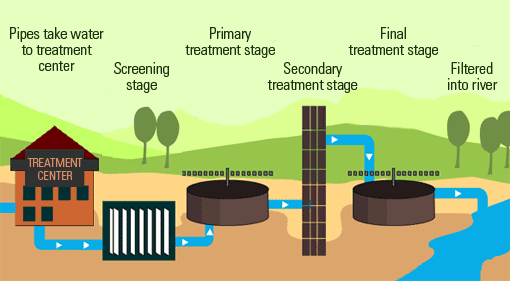Comprehensive Overview to Industrial Waste Water Treatment Processes
Comprehensive Overview to Industrial Waste Water Treatment Processes
Blog Article
Strategic Approaches to Improve Drainage Therapy Efficiency and Lessen Environmental Influence
In the realm of drainage therapy, the pursuit for improved performance and decreased environmental impact is a continuous obstacle that requires strategic options. As culture faces the important to take care of water sources sustainably, a nuanced technique ends up being necessary. The combination of innovative therapy innovations, energy-efficient processes, resource healing techniques, boosted nutrient removal techniques, and wise surveillance and control systems stands for a complex framework for dealing with these pushing worries. What exists at the core of this facility internet of strategies is the prospective to transform the means we come close to waste water therapy, not simply as a process of disposal, yet as a valuable possibility for development and ecological stewardship.
Advanced Therapy Technologies
Sophisticated membrane purification systems have transformed advanced wastewater therapy procedures, dramatically enhancing the removal of pollutants. These cutting-edge systems function forcibly water with a semi-permeable membrane, successfully separating contaminations from the water stream. The membrane's tiny pores catch pollutants such as bacteria, viruses, and put on hold solids, allowing just cleansed water to travel through. This modern technology has verified to be extremely efficient in eliminating a large range of pollutants, including drugs, hefty metals, and organic substances, which are often challenging to eliminate with traditional therapy methods.
Additionally, membrane filtering systems supply numerous advantages over standard therapy methods. Additionally, these systems are highly flexible and can be quickly integrated into existing therapy plants or made use of as standalone systems for decentralized applications.
Energy-Efficient Procedures
The combination of energy-efficient processes in wastewater treatment systems is crucial for enhancing resource application and lowering functional prices. By carrying out energy-efficient technologies, treatment plants can significantly decrease their carbon impact and general environmental effect. One vital technique to improving power performance in wastewater therapy is the usage of sophisticated oygenation systems, such as fine bubble diffusers or surface area aerators, which can enhance oxygen transfer efficiency and reduce power usage. Furthermore, incorporating energy healing systems, like anaerobic digestion for biogas production or making use of excess warmth for thermal processes, can aid counter energy needs and advertise sustainability.
Furthermore, optimizing procedure control and automation through the use of sophisticated sensors and checking systems can improve overall energy effectiveness by readjusting operations in real-time based on real demand and conditions. Executing energy audits and on a regular basis keeping track of power performance signs are necessary methods to recognize locations for improvement and track energy-saving efforts efficiently. Generally, the fostering of energy-efficient processes in wastewater treatment not just benefits the setting but additionally adds to lasting expense savings and functional sustainability.
Source Recovery Strategies
With a concentrate on optimizing resource use and sustainability in wastewater therapy systems, the execution of source healing methods arises as an essential facet in improving functional effectiveness. Resource recuperation methods in wastewater treatment include the identification and removal of important resources from the waste stream, consequently transforming what was once considered waste into an important asset. By executing source healing methods such as nutrient removal and healing, energy generation from organic matter, and the production of multiple-use water, wastewater treatment plants can reduce environmental influence while optimizing efficiency.

Boosted Nutrient Removal Methods
Carrying out sophisticated nutrient removal techniques is necessary for optimizing the efficiency of wastewater therapy systems. Enhanced nutrient removal plays an essential duty in lessening the ecological effect of treated effluent released right into water bodies. Among the essential strategies made use of for boosted nutrient removal is the procedure of organic nutrient elimination (BNR), which involves the elimination of nitrogen and phosphorus with biological processes. This can be achieved via making use of specialized microorganisms that can convert nitrogen compounds into inert nitrogen gas with denitrification, and gather phosphorus within their cells with a procedure called boosted organic phosphorus removal (EBPR)

In enhancement to BNR, progressed therapy techniques such as membrane bioreactors (MBRs) and constructed wetlands can also be used to boost nutrient elimination performance. MBRs use membranes to accomplish high-grade effluent standards by properly getting rid of nutrients and put on hold solids. Constructed wetlands simulate natural wetland processes to get rid of nutrients via plant uptake, microbial task, and sedimentation. By incorporating these innovative nutrient elimination strategies into wastewater treatment sectors, municipalities and systems can effectively reduce nutrient pollution and protect the environment.
Smart Surveillance and Control Systems
Using sophisticated modern technology, the assimilation of wise surveillance and control systems changes the functional performance of wastewater treatment centers. These systems incorporate sophisticated sensors and information analytics to constantly keep an eye on vital specifications such as pH levels, turbidity, dissolved oxygen, and flow prices in real-time. By accumulating and evaluating this data, operators can obtain beneficial insights right into the performance of the therapy procedures, allowing proactive modifications to maximize treatment performance.
Smart surveillance and control systems likewise sustain remote tracking abilities, permitting operators to accessibility real-time information and control functions from off-site locations. This remote availability enhances functional flexibility and responsiveness, allowing quick treatments in situation of system breakdowns or changes in influent top quality. Additionally, the anticipating maintenance capacities of these systems help prevent tools failures and reduce downtime, inevitably enhancing the general integrity of wastewater treatment procedures (Waste Water Treatment).
Final Thought
In conclusion, tactical strategies such as innovative treatment modern technologies, energy-efficient procedures, source recuperation techniques, boosted nutrient removal techniques, and clever surveillance and control systems play a critical function in boosting wastewater therapy effectiveness and decreasing ecological influence. By carrying out these strategies, wastewater therapy plants can enhance their overall efficiency, lower power usage, recoup beneficial sources, and guarantee compliance Extra resources with environmental company website policies. These strategies are important for effective and sustainable wastewater administration methods.

In conclusion, critical techniques such as innovative therapy modern technologies, energy-efficient procedures, resource healing techniques, boosted nutrient removal methods, and wise surveillance and control systems play an essential function in boosting wastewater therapy performance and reducing ecological impact.
Report this page